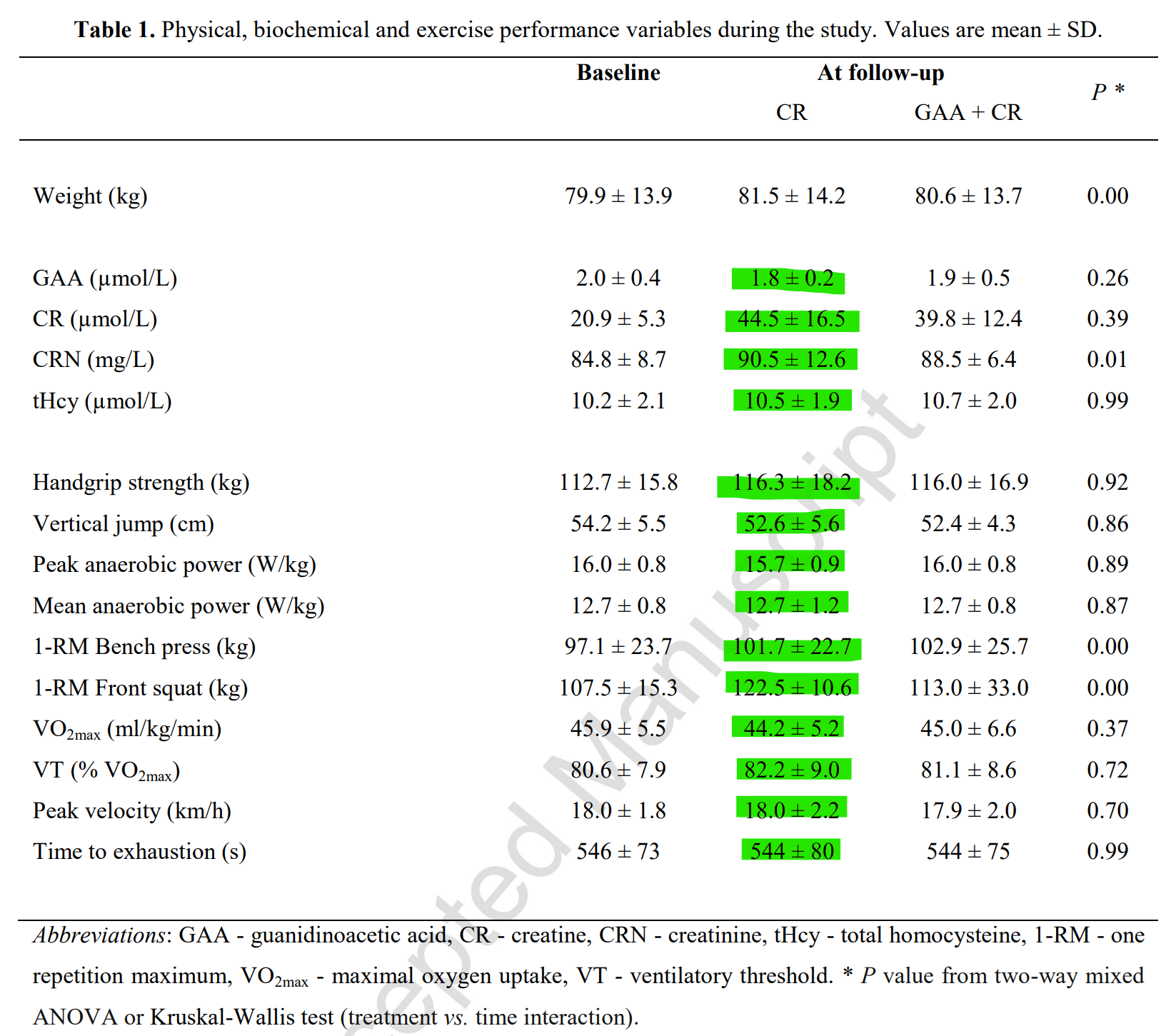
Is CreGAAtine a Scam? - TLDR
 |  |
SUMMARY: It is our opinion that CreGAAtine is a scam. The human clinical trials they have performed distort and misrepresent the claims they are making, furthermore we believe their data actually shows that normal creatine monohydrate is better than CreGAAtine.
Their first human study, with 5 subjects, linked here. Quoting the study: "Baseline serum creatine levels (42.0 ± 3.0 µmol/L) were elevated by 19.2 µmol/L (95% CI; 8.9 - 29.5) and by 14.9 µmol/L (95% CI; 2.8 - 27.0) after GAA and creatine loading at 4-week follow up". So, normal Creatine increased levels by 14.9 µmol/L and CreGAAtine increased levels by 19.2 µmol/L, which is a 28.85% baseline adjusted increase or a 7.56% non-baseline adjusted increase. Either one is a hell of a lot lower than the 8.5 times more that they are claiming by comparing percentages. Our other issues with this study is that they studied a 3mg dosage of CreGAAtine which is 50% higher than the 2mg dosage it is currently sold at. They also only compared it to 3.4 grams of creatine monohydrate, quite a bit lower than the typical 5 g dosage.
In their second study, with 14 subjects, linked here, we see even worse results. We have copied Table 1 below so you can see it. Creatine Monohydrate is either better or within one unit of CreGAAtine, so little so as to be irrelevant, for everything tested in Table 1. Their own study admits "creatine was superior to GAA-creatine blend to elevate serum creatinine levels" and "No significant between-group changes were observed at post-administration in handgrip strength, anaerobic or aerobic performance." Normal Creatine has a baselined adjusted 24.87% increase in serum creatine levels compared to CreGAAtine. They didn't report raw values for tissue, which is very strange, only percentages. However, if we correctly applied the percentages, creatine had a 36.21mM, compared to CreGAAtine at 41.50 mM, only a 14.61% increase. Which is a hell of a lot lower and probably why they weirdly excluded these values from the paper. Our other issues with this study is that they studied a 4mg dosage of CreGAAtine which is 100% higher (2 times) than the 2mg dosage it is currently sold at. This study used a GAA to Creatine ratio of 1:3 but CreGAAtine sold commercially uses 1:1; this is a entirely different formulation, these results seem irrelevant to the commercial product.
We believe that not only is CreGAAtine inferior to normal creatine monohydrate but their own studies actually demonstrate this. You can't feel creatine, the bar scientific bar should be higher not lower. Even if it is slightly better in some cherry-picked categories, we would skip CreGAAtine and just stick with Creatine Monohydrate.
We would also like to draw attention to Swift High Performance Supplements who also found tons of other flaws in the CreGAAtine science here. They seem to actually be able to read a study and should be supported! It's also nice to see people on reddit calling it out as "Definitely BS" with tons of upvotes.

What is a TLDR review?
A full ingredient review takes weeks to research and weeks to write up as they are 2000–4000 words in length. We love the research part but don't have a full mastery of the English language and loathe the writing. TLDR means "Too long, didn't read". We are going to try doing the same research and just writing a summary. If an ingredient gets enough views, we will expand this to a full write-up. We hope this allows us to give our opinion on more ingredients and prioritize novel new ingredients that just launched.

